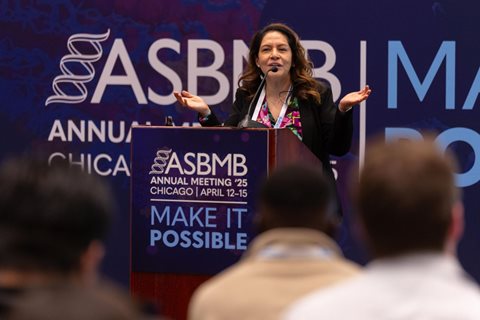Why every lab needs a hall of fame
According to a Google search, there are more than 200 halls of fame in the world covering diverse areas such as music, theater, all kinds of sports and many more. Halls of fame have been created to capture the history of certain disciplines by inducting each year their most famous representatives and by highlighting their achievements.
Rather surprisingly, there are no internationally recognized science halls of fame. Perhaps this gap is filled by other means, such as internationally renowned prizes (e.g., the Nobel Prize) and memberships to national science academies.
Consistent with this idea of honoring excellence is my proposal of establishing halls of fame in research laboratories with the objective of identifying and honoring those members who have made lasting contributions. Other workplaces, such as restaurants and hotels, have found other creative ways to boost the morale of their employees, such as employee-of-the-month designations and parking spaces.
Consistent with practices followed by other halls of fame, members could be inducted on a yearly basis and after the members have been out of the laboratory for at least a year. The laboratory director or a selection committee, which would include other lab members, could select inductees. The induction should not be exclusive of nonscientific staff, such as managers, secretaries and technologists, if those individuals have contributed critically to the lab’s success.
My own laboratory was established in 1988 and today includes about 30 members, with a turnover rate of about four or five individuals per year. Since 1988, we have inducted 27 individuals into the lab’s hall of fame, of whom four were technologists, one was a secretary, six were postdoctoral fellows and 16 were graduate students. Each entry mentions the years spent in the lab, cites two or three of the inductee’s most important publications (if applicable) and includes a 50- to 70-word citation describing his or her most significant contributions.
Feedback received from previous inductees has been very positive. For example, one former graduate student who now works in Switzerland visited the lab five years after she graduated and was surprised and thrilled to see her inclusion to the lab’s hall of fame. As she put it, it was an unexpected and very welcome recognition of her contributions. Our hall of fame is displayed in the corridor leading to the lab and is visible to the many individuals — scientists, students, patients — who pass by.
An individual’s contributions to a research lab are indelibly documented in publications, theses, conference presentations, patents and other materials that originated from their research. The hall of fame is another way of recognizing significant contributions of staff in a research laboratory. It is just another way of saying thank you for a job well done.
How important might a hall-of-fame induction be? This question can be answered with an anecdote from a lab technologist who applied for a senior technologist position and did not get it. The promotion did not include any financial benefit or change of responsibilities, and I asked him why he was sad about not being selected. He replied, “Even a small recognition of my work is very important for me.”
Members of my hall of fame

George M. Yousef
Years in Lab: 1998–2002
Most important publications: J. Biol. Chem. 274, 37511–37516 (2000); J. Biol. Chem. 275, 11891–11898 (2001); J. Biol. Chem. 276, 53–61 (2000).
Citation: George is credited with the cloning of many novel kallikrein and other genes, the characterization of the kallikrein locus and the demonstration that many of these genes are regulated by steroid hormones and can act as effective cancer biomarkers.

Vathany Kulasingam
Years in Lab: 2004–2008
Most important publications: Nat. Rev. Cancer. 5, 371–378 (2010); Nat. Clin. Pract. Oncol. 10, 588–599 (2008); Mol. Cell. Prot. 6, 1997–2011 (2007).
Citation: Vathany was the first to systematically standardize our proteomic methods for biomarker discovery and wrote influential reviews on how to discover cancer biomarkers by using mass spectrometry.
Enjoy reading ASBMB Today?
Become a member to receive the print edition four times a year and the digital edition monthly.
Learn moreFeatured jobs
from the ASBMB career center
Get the latest from ASBMB Today
Enter your email address, and we’ll send you a weekly email with recent articles, interviews and more.
Latest in Careers
Careers highlights or most popular articles

Building the blueprint to block HIV
Wesley Sundquist will present his work on the HIV capsid and revolutionary drug, Lenacapavir, at the ASBMB Annual Meeting, March 7–10, in Maryland.

Upcoming opportunities
Present your research alongside other outstanding scientists. The #ASBMB26 late-breaking abstract deadline is Jan. 15.

Designing life’s building blocks with AI
Tanja Kortemme, a professor at the University of California, San Francisco, will discuss her research using computational biology to engineer proteins at the 2026 ASBMB Annual Meeting.

Upcoming opportunities
#ASBMB26 late-breaking abstract submission opens on December 8. Register by Jan. 15 to get the early rate on our Annual Meeting.

Make your abstract stand out
Ensure your research is impossible to overlook. Get quick, practical reminders for crafting an abstract that attracts readers and helps you build connections at the conference.

Inside industry postdocs
As more Ph.D. scientists look beyond academia, industry postdocs offer a new kind of training, where mentorship meets mission-driven research. Fellows at Pfizer and Genentech share how these programs prepare them to translate discovery into impact.

